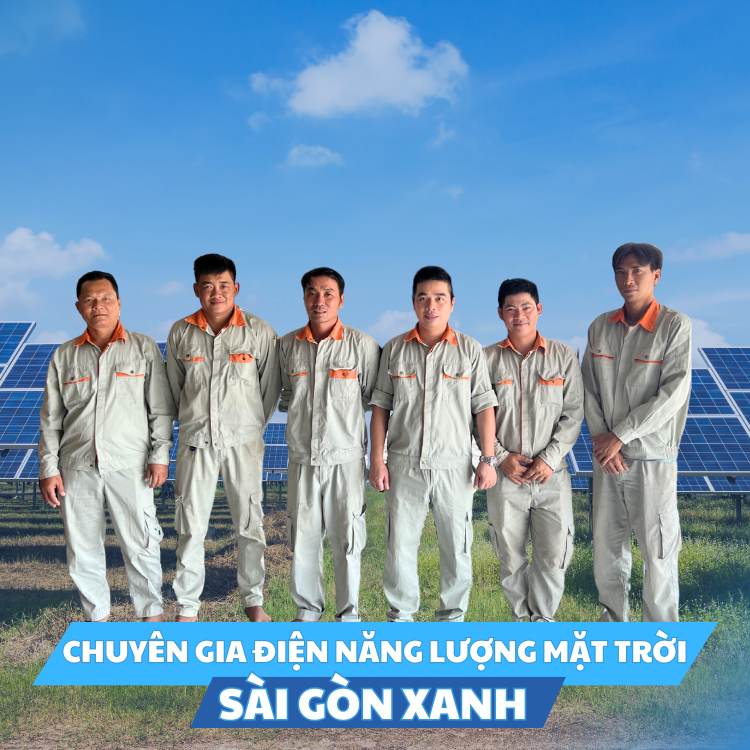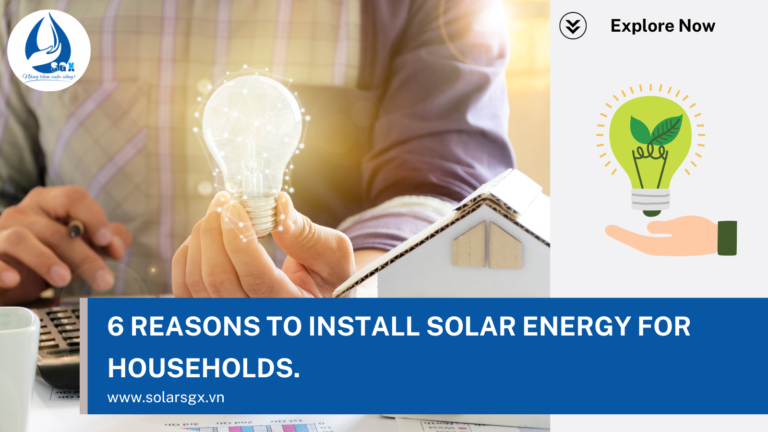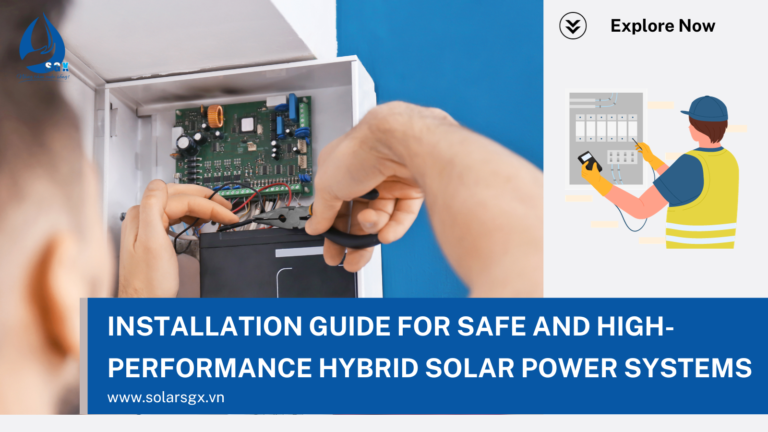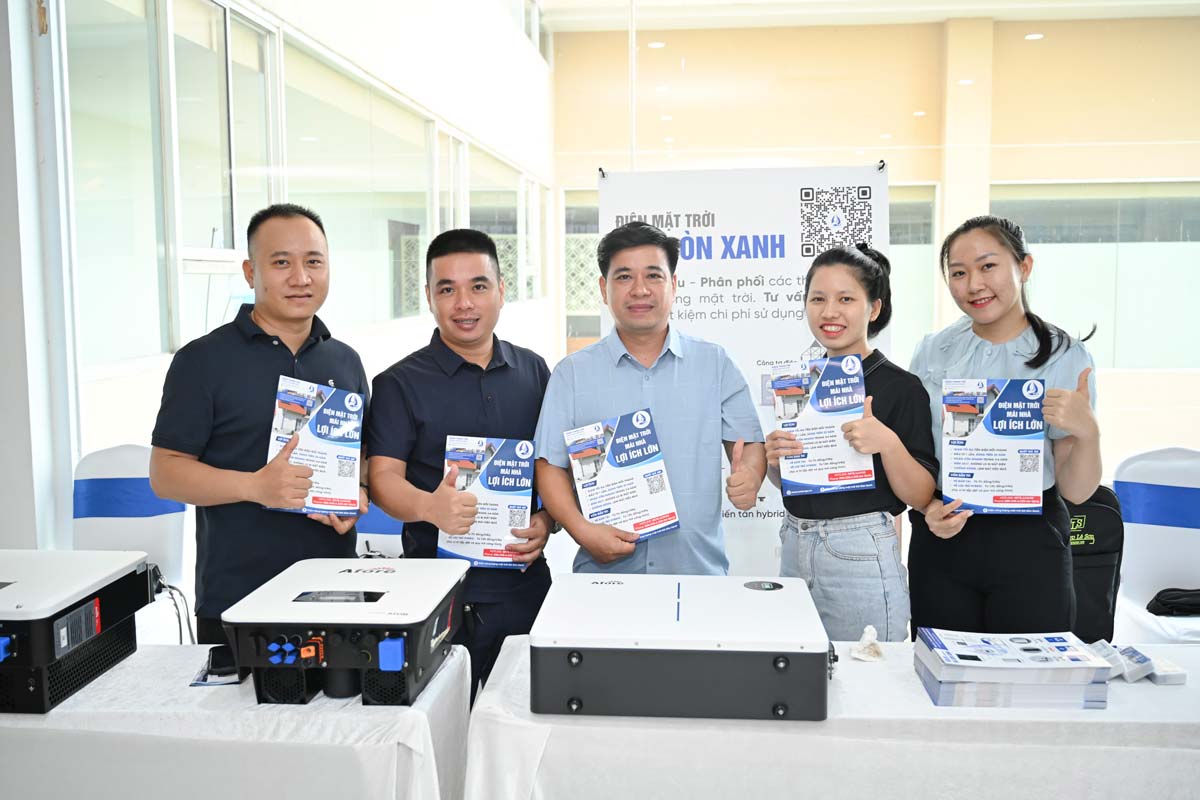5 Tips for Investing in Solar Energy to Maximize Profit
Investing in solar energy systems not only brings environmental benefits but also presents an attractive investment opportunity with high profit potential. Here are 5 important tips to help investors maximize returns from investing in solar power:
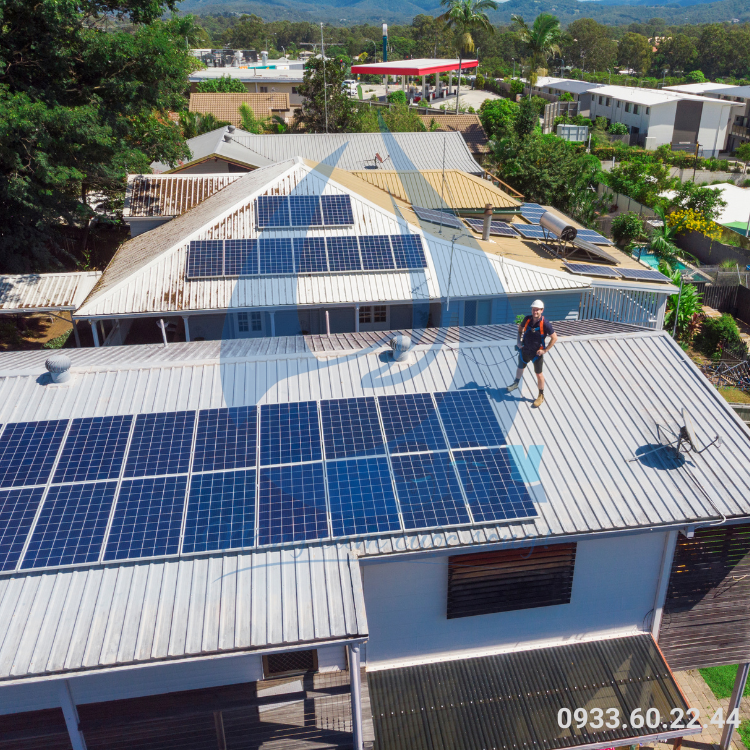
1. Smart Location Selection for Installation
The location for installing a solar energy system plays a crucial role in its performance. Choosing a spot with ample sunlight and avoiding shading from surrounding structures is essential to maximize electricity production.
Orientation and Angle of Solar Panels
- Orientation:
For countries in the Northern Hemisphere, facing the panels towards the South will receive the best sunlight. Conversely, in the Southern Hemisphere, facing them Northward would be more effective.
- Tilt Angle:
The tilt angle of the panels significantly impacts their efficiency. Adjusting this angle optimally captures the maximum amount of incident sunlight.
Capability to Capture Sunlight
- Avoid Obstructions:
Prevent obstacles such as trees, buildings, or any structures that may block sunlight from reaching the solar panels.
- Minimal Shadowing Throughout the Day:
The location should not experience prolonged shading throughout the day. Elevated terrains, for instance, can create extended shadows.
Accessibility and Maintenance Ease:
- Easy Accessibility for Maintenance
Choose an installation location that allows easy access for maintenance and repairs.
- Scalability:
Ensure the surrounding space of the system can expand if needed for the enlargement of the solar power system.
Local Climate Conditions
- Sunshine Abundance:
The installation site should receive ample sunlight with minimal rainfall and cloud cover to maximize efficiency.
- Topography and Weather:
Consider factors like altitude and terrain to ensure the location isn’t susceptible to adverse weather conditions such as strong winds, storms, or snow.
Regulations and Legal Compliance
- Adherence to Local Regulations:
Ensure that the installation site complies with local regulations and laws pertaining to the installation of solar energy systems.
2. Utilization of Modern Technology and Quality Equipment.

Investing in the latest technology and high-quality equipment helps optimize the electricity output produced by the system. Advanced technology enhances operational efficiency and reduces long-term maintenance costs.
Utilizing state-of-the-art technology and high-quality equipment in a solar power system is crucial to optimizing performance and ensuring system stability. Here are some considerations:
Solar Panels
- Quality:
Choose solar panels from reputable manufacturers with quality certifications such as ISO, CE, or other international standards.
- Efficiency:
Opt for panels featuring advanced technology like mono-crystalline or poly-crystalline to improve the conversion efficiency of light into electrical energy.
Inverter
- High-Quality Inverter:
CSelecting an inverter with high efficiency and long lifespan to convert solar energy into alternating current compatible with the electrical grid.
- Optimization Adjustment:
Modern inverter technology offers flexibility in adjusting performance according to light conditions and temperature.
Monitoring and Management System
- Performance Monitoring:
Utilize a performance monitoring system to supervise and early detect technical issues, thereby optimizing electricity output.
- Remote Management:
Modern technology enables remote system management, allowing control and monitoring from a distance through applications or software.
Energy Storage (If Needed)
- Battery Storage:
Incorporate energy storage batteries into the system to save energy and use solar power 24/7, particularly in the absence of sunlight.
Regular Maintenance and Upgrades
- Scheduled Maintenance:
Regularly maintain the system to uphold high performance and extend the lifespan of the equipment.
- Technology Upgrades:
Update equipment and adopt new technologies to leverage advancements in the solar energy industry.
3. Detailed Technical Calculations
Before investing, it’s essential to conduct detailed technical calculations to determine the system size that suits the electricity usage needs of a household or business. This helps avoid waste and optimizes efficiency.
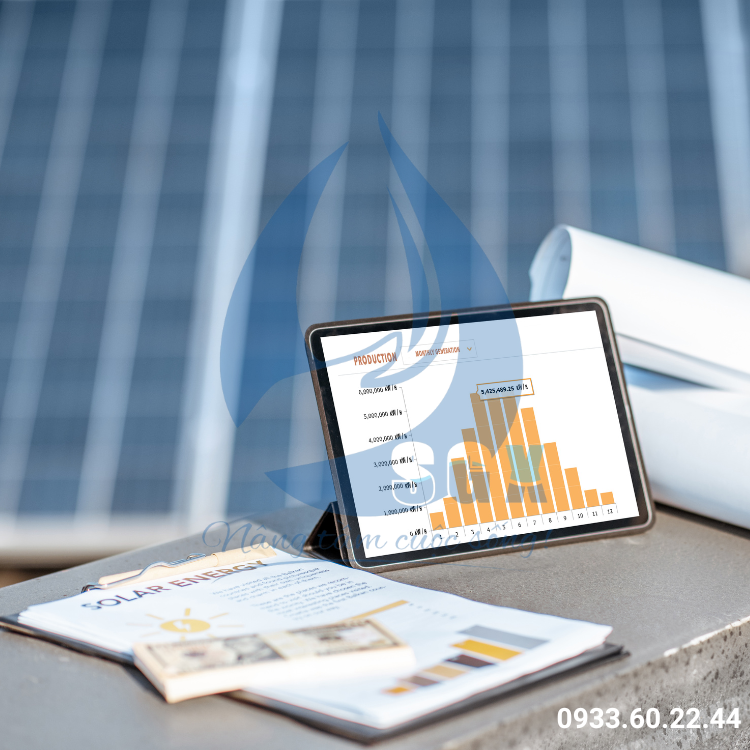
Performing detailed technical calculations in investing in a solar power system is crucial to determine the system’s size and performance. Below are some fundamental steps in this calculation process:
Determine Electricity Consumption Needs
- Analyze the historical electricity consumption of a household or business to identify daily, monthly, and yearly electricity usage.
- This should include seasonal variations and time patterns.
Determine System’s Production Capacity
- Use data on solar radiation at the installation location to estimate the system’s electricity production.
- These parameters include solar irradiance, the angle of solar panels, and the efficiency of solar panels.
Calculate System Size
- Based on electricity consumption needs and the system’s production capacity, calculate the required size of the solar power system.
- This includes the quantity and capacity of solar panels needed for installation.
Determine System Efficiency Factor (DER – System Efficiency Rating)
- Calculate the overall system efficiency factor (DER).
- This includes losses in the conversion and transmission of electricity from solar panels to the household’s electrical system.
Assess Costs and Benefits
- Compute initial investment costs and operational expenses to compare them with expected benefits from energy savings or supported policies and tax benefits.
Simulate System Performance
- Utilize simulation software to evaluate the expected performance of the system under different conditions, including harsh weather conditions.
Conduct Verification and Adjustment
- After installation, perform actual verification of the system to confirm performance and adjust parameters if necessary to achieve maximum efficiency.
This detailed technical calculation process requires accuracy and meticulous calculations to ensure the system is designed and operated as efficiently as possible
4. Regular Operations Management and Maintenance
To maintain high performance, regular operations management and maintenance are crucial. This helps ensure the system operates smoothly and extends the lifespan of the equipment.
Investing in solar energy systems not only benefits the environment but also presents an attractive financial opportunity. By applying these tips, you can optimize profits and contribute to the development of clean energy
5. Selecting a reputable solar panel installation company.
Điện năng lượng mặt trời Sài Gòn Xanh – Nâng tầm cuộc sống!
- TƯ VẤN – KHẢO SÁT – THI CÔNG
- 0976 123450 (phím 1), 096 5594559
- Website: solarsgx.vn
- Fanpage:Điện năng lượng mặt trời Sài Gòn Xanh
- Địa chỉ: 21 Sến Quỳ, Ninh Sơn, Thành phố Tây Ninh, Tây Ninh

